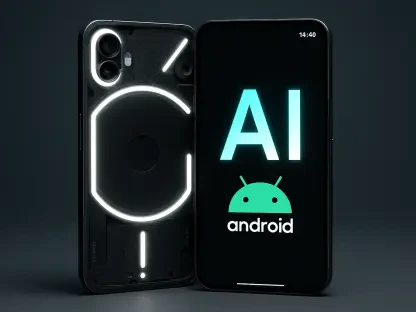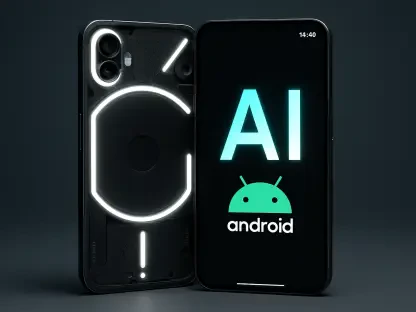The development of wearable hydration sensors represents a breathtaking advancement in medical technology, especially considering the detrimental effects of dehydration. This innovation aligns with a broader trend in healthcare toward non-invasive, real-time monitoring tools that empower individuals to take proactive steps in managing their health. Researchers at the University of Texas at Austin have developed an electronic e-tattoo designed to combat dehydration-related health issues—a concern that has become particularly pressing in areas like Texas. The system attaches to the bicep, offering an innovative method to gauge muscle hydration through electrical conductivity. Notably, this e-tattoo has an impressive correlation with full-body hydration levels, rivaling traditional, more invasive methods like blood and urine analysis. This new approach, while still in its developmental stages, promises a shift in hydration monitoring that could extend its benefits far beyond individual health, potentially impacting broader public health protocols and preventive measures in healthcare.
The Technology Behind Hydration Sensors
The hydration sensor developed by the University of Texas at Austin exemplifies cutting-edge wearable technology aimed at addressing dehydration by continuously monitoring hydration levels. Its unique design offers a more practical and less intrusive alternative to current methods, which are often hampered by bulky equipment or require blood samples. The research team, led by Professor Nanshu Lu, aimed to create a device as unobtrusive as possible, resulting in an electronic e-tattoo worn on the upper arm. This location was strategically chosen since it offers a better and more comprehensive reading of the body’s hydration state compared to smaller muscle groups. At its core, the device uses electrical conductivity to assess hydration, a method known for its reliability. This capability is essential since dehydration-related fatalities, particularly in hot climates, underscore the need for effective monitoring tools. The data from 2023 showed significant dehydration issues, highlighting the need for innovative solutions like this e-tattoo.
The novelty of this hydration sensor also lies in its ability to provide real-time feedback, a critical feature in personal health monitoring. Unlike conventional procedures that require sample collection and lab analysis, this e-tattoo offers instant data on hydration levels and potentially other vital health metrics. Its non-invasive nature ensures it doesn’t disrupt daily activities, allowing users to wear it throughout the day and gather continuous feedback. This development aligns with expanding health technology focuses on unobtrusive, user-friendly devices. Given its potential, the sensor has already attracted interest from various corporate partners eager to explore its applications beyond individual health. Collaborations with local institutions, including UT Athletics, are anticipated, further emphasizing its real-world applicability and potential market reach. Such technology speaks to the future of medical devices—promising not just increased convenience but also enhanced accuracy and responsiveness in health monitoring.
Potential Impact on Healthcare
The implications of a reliable, wearable hydration sensor are expansive and could significantly alter the landscape of personal healthcare. This impact is most directly observable in preventive medicine, where early detection and intervention are vital. By continuously monitoring hydration, individuals can prevent conditions linked to dehydration before they escalate into serious health issues. For athletes, the elderly, or those living in extreme climates, this could mean the difference between health maintenance and medical emergency. The potential for such technology to reduce dehydration-related complications is profound, especially if these sensors become widely accessible and adopted. Such data can support effective public health strategies by enabling authorities to better prepare for and mitigate dehydration-related incidents.
Moreover, the success of these sensors could spur further innovations in health monitoring technologies, encouraging more investment and research into similar devices. The drive for non-invasive devices that seamlessly integrate into everyday life is likely to accelerate as more people become health-conscious, valuing constant access to personal health data. As the development of wearable technologies progresses, these hydration sensors may set a precedent for what is possible, catalyzing a wave of breakthroughs in various aspects of health monitoring. This sensor’s ability to act as an early-warning system illustrates how technology continues to converge with health, forging new paradigms of patient care and empowerment.
The Future of Non-Invasive Health Monitoring
The development of wearable hydration sensors marks an impressive advancement in medical technology, especially considering how harmful dehydration can be to health. These sensors align with a growing trend in healthcare towards non-invasive, real-time monitoring devices that enable people to manage their health proactively. At the University of Texas at Austin, researchers have crafted an electronic e-tattoo specifically designed to address health issues stemming from dehydration, particularly pressing in hot regions like Texas. This innovative device adheres to the bicep and utilizes electrical conductivity to measure muscle hydration levels. Remarkably, the e-tattoo’s accuracy in determining full-body hydration even challenges more traditional techniques like blood and urine tests. Although still under development, this innovation holds great promise in transforming how hydration is monitored, potentially offering significant implications for not only individual health but also broader public health strategies and preventive healthcare practices.









